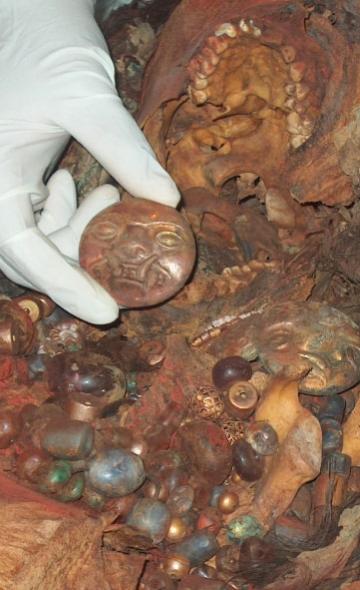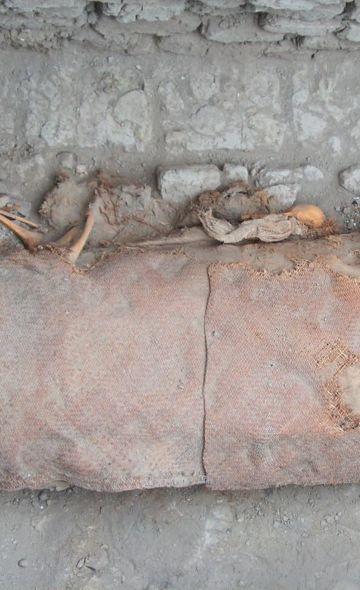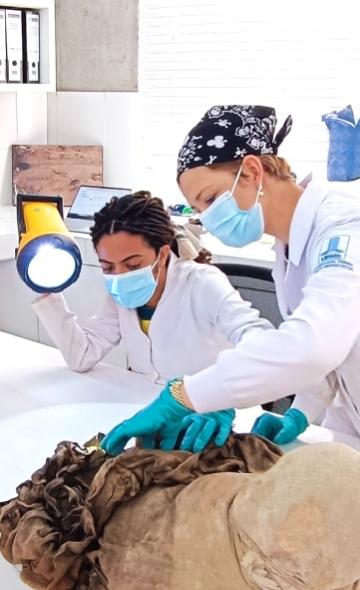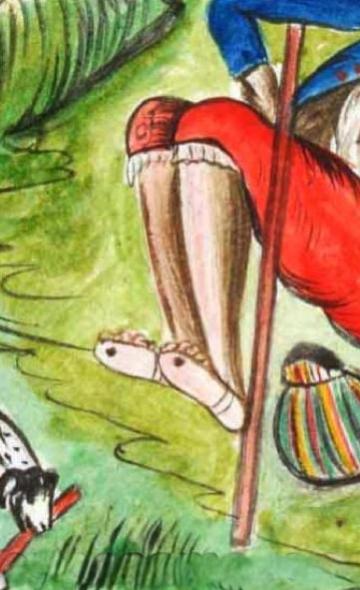- Visitors
- Researchers
- Students
- Community
- Information for the tourist
- Hours and fees
- How to get?
- Virtual tours
- Classic route
- Mystical route
- Specialized route
- Site museum
- Know the town
- Cultural Spaces
- Cao Museum
- Huaca Cao Viejo
- Huaca Prieta
- Huaca Cortada
- Ceremonial Well
- Walls
- Play at home
- Puzzle
- Trivia
- Memorize
- Crosswords
- Alphabet soup
- Crafts
- Pac-Man Moche
- Workshops and Inventory
- Micro-workshops
- Collections inventory
- News
- Researchers
- Jewels and ornaments of the Lady of Cao: the necklaces
News
CategoriesSelect the category you want to see:
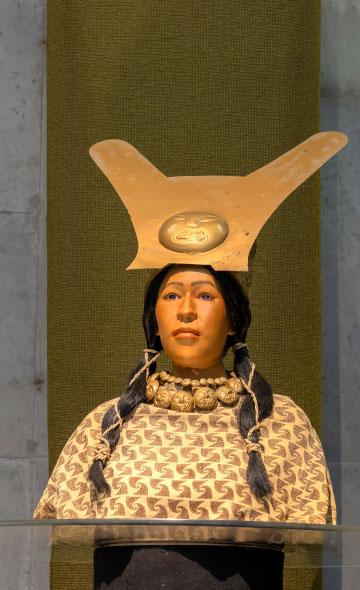
What is an anaco, a garment found in the funerary bundle of the Lady of Cao and in the Lambayeque funerary bundles? ...
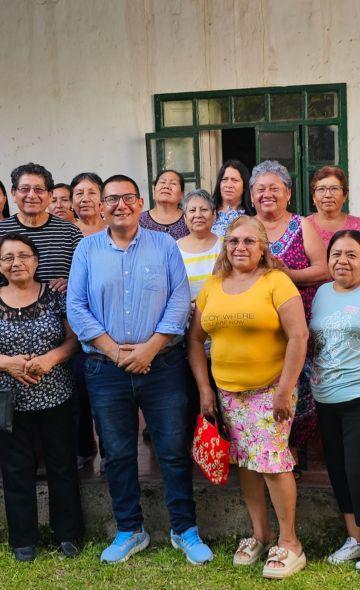
Inauguration of the 2025 Tourism Panel Discussions in Magdalena de Cao ...
To receive new news.
Por: Yuriko Garcia Ortiz
Ornaments play a relevant role given that they transmit valuable information about who wears them (Jiménez, 2012), about the diversity of resources and the technical characteristics of production and circulation of goods, and they constitute a complex medium of meanings and symbolic power within a society (Nannini, 2016). Research shows us that ornaments such as beads for the crafting of amulets, necklaces, bracelets, and others, are among the first signs of symbolic behavior in human ancestors, and their appearance indicates important advances in both cognition and social relationships (Álvarez & Jöris, 2008; Sehasseh et al., 2021). These objects have accompanied humans since prehistoric times, in the Bizmoune cave (Morocco) archaeologists have recorded the oldest beads crafted in Tritia gibbosula, a marine gastropod mollusk also called Nassarios, dated from 150,000 BC years ago (Sehasseh et al., 2021).
Necklaces are significant objects that are part of the attire. In pre-Hispanic Peru, a variety of jewelry and ornaments were used to adorn the body and show the identity of their wearers (Kaulicke, 2016). These ornaments were made with various raw materials that reflected not only preferences, worldviews and beliefs, but also the ability to access these objects.
Offerings in the funerary bundle of the Lady of Cao
The discovery of the elite tombs in the northwest enclosure of the second edifice of Huaca Cao Viejo in 2005 signified the understanding of the Mochica society from its social complexity in funerary contexts, the construction of the mausoleum enclosure and the composition of the funerary bundle (Bazán, 2021).
Accompanying the body of the Lady of Cao were found multiple ornaments and emblems of power, including 15 necklaces arranged around her neck (Fernández, 2021). These accessories are part of the most impressive set of pieces of the funerary trousseau of this elite Mochica personage.
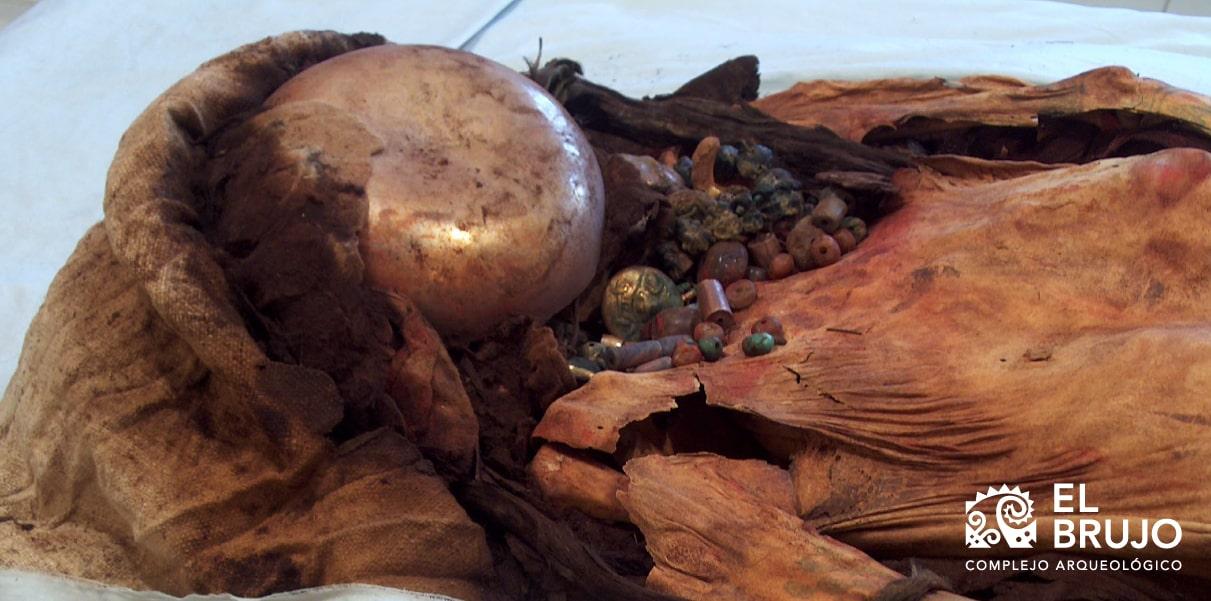
Figure 1. View of the body of the Lady of Cao. The face is covered with a metal plate and one can see the necklaces.
Necklaces: raw materials, manufacturing and decoration
The crafting of the necklaces of the Lady of Cao implied a great diversity of gold and silver beads, aside from alloys such as tumbaga (gold and copper), techniques such as gilded copper and sets of semi-precious stones such as quartz (carneola and amethyst), jade, sodalite and turquoise (Cesareo et al., 2021; Franco, 2021).
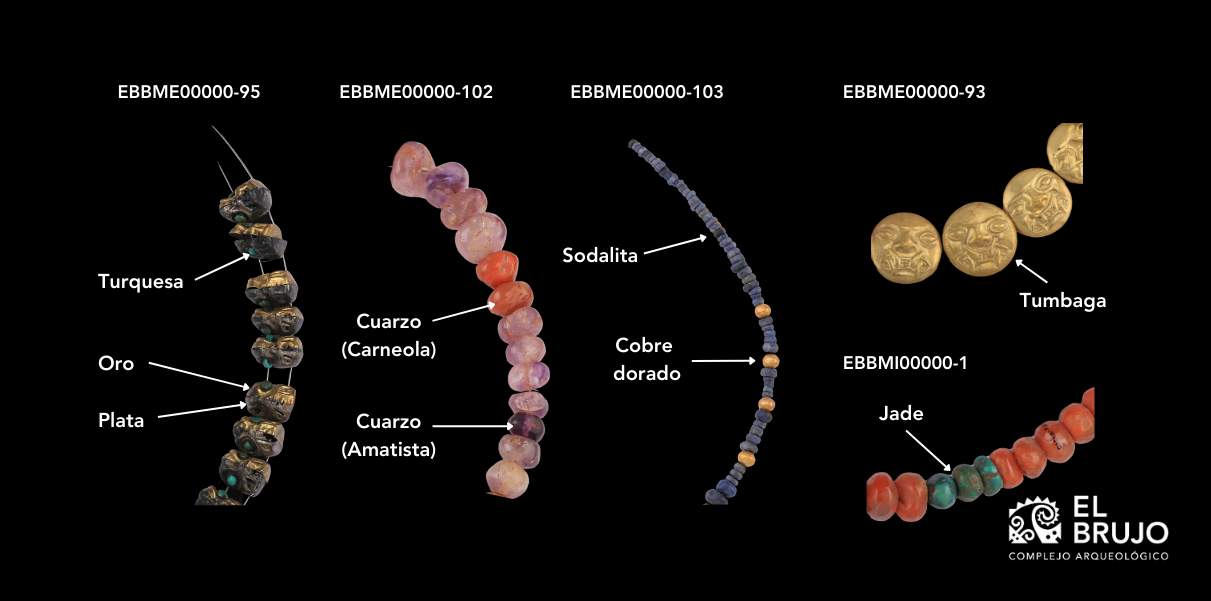
Figure 2. Various raw materials in the necklaces of the Lady of Cao.
The beads of the necklaces were crafted with different manufacturing techniques depending on the type of raw material used. In the case of gemstones, carving techniques were identified for the elaboration of spherical and tubular beads and the drilling of the holes.
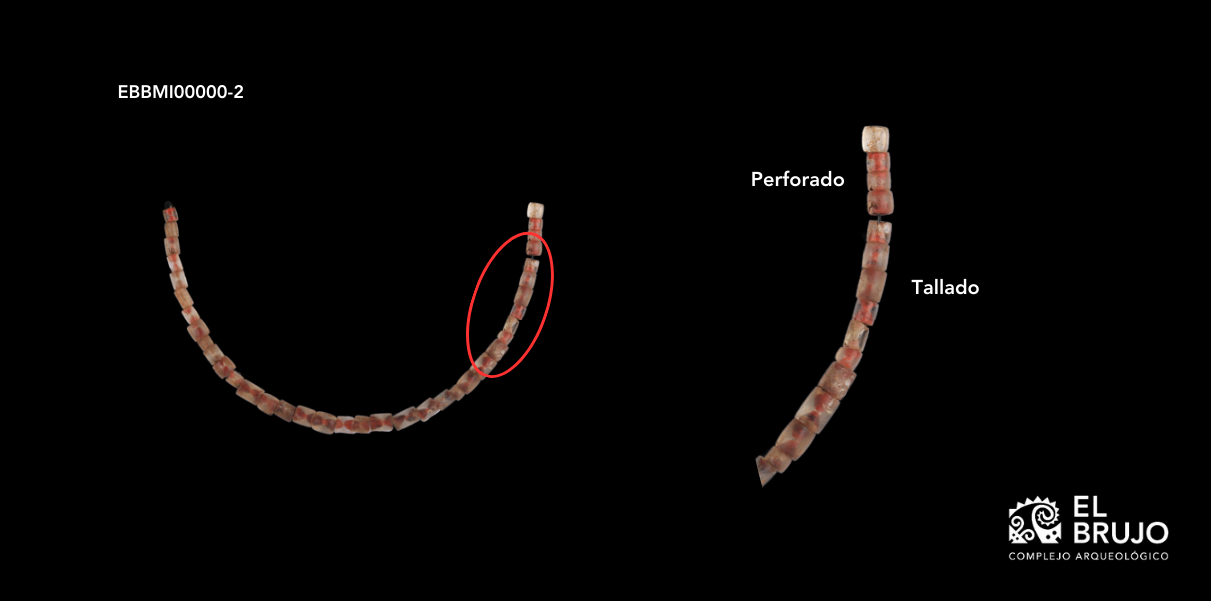
Figure 3. Manufacturing techniques: carving and drilling.
As for the production of metal beads using goldsmithing techniques for the necklaces of the Lady of Cao, lamination has been identified as the method for expanding and thinning the metal until the desired volume was obtained, and perforation for making the holes through which go the threads that assemble the piece, as the initial processes complemented with other techniques.
· Wire drawing: it is the process for crafting fine metal wires, which allows to obtain wires of precise diameter and shape, with a wide range of mechanical and surface properties.
· Welding: allows two metals or alloys to be joined with the application of heat at a higher temperature than that of the initial parts.
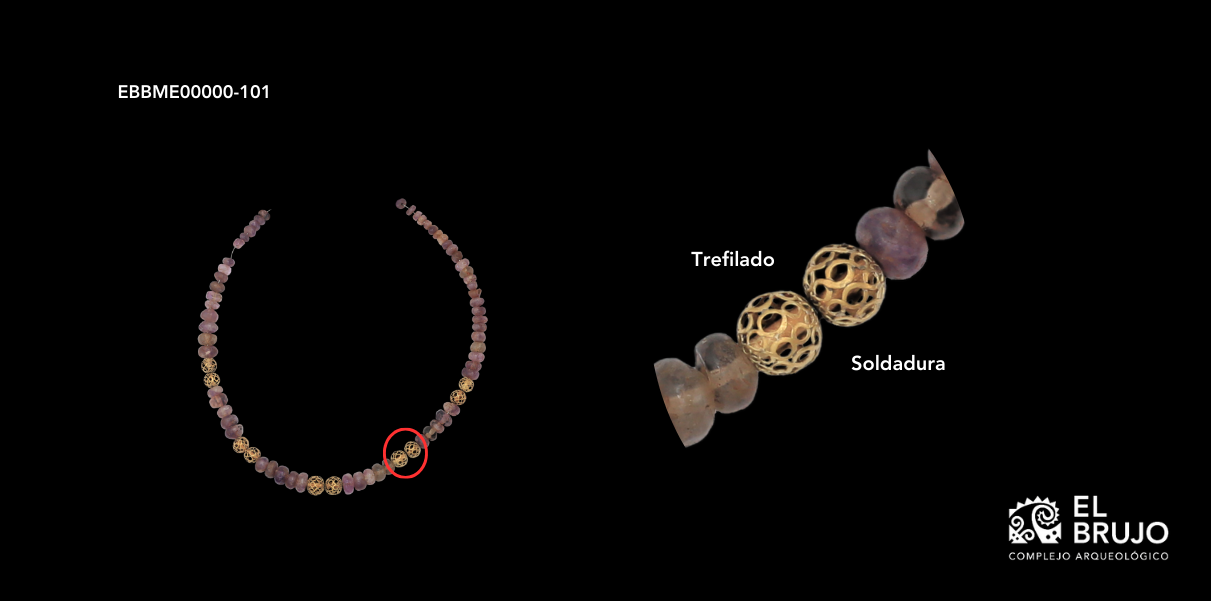
Figure 4. Manufacturing techniques: wire drawing and welding.
· Mechanical bonding: it is the procedure that consists in joining two or more parts of artifacts without resorting to some type of metallurgical procedure, such as heat.
· Hammering: it is the application of pounding the metal sheet in order to expand, mold and thin the piece.
· Embedding: it is the joining of two metal pieces by pressure, with heat (welding) or cold.
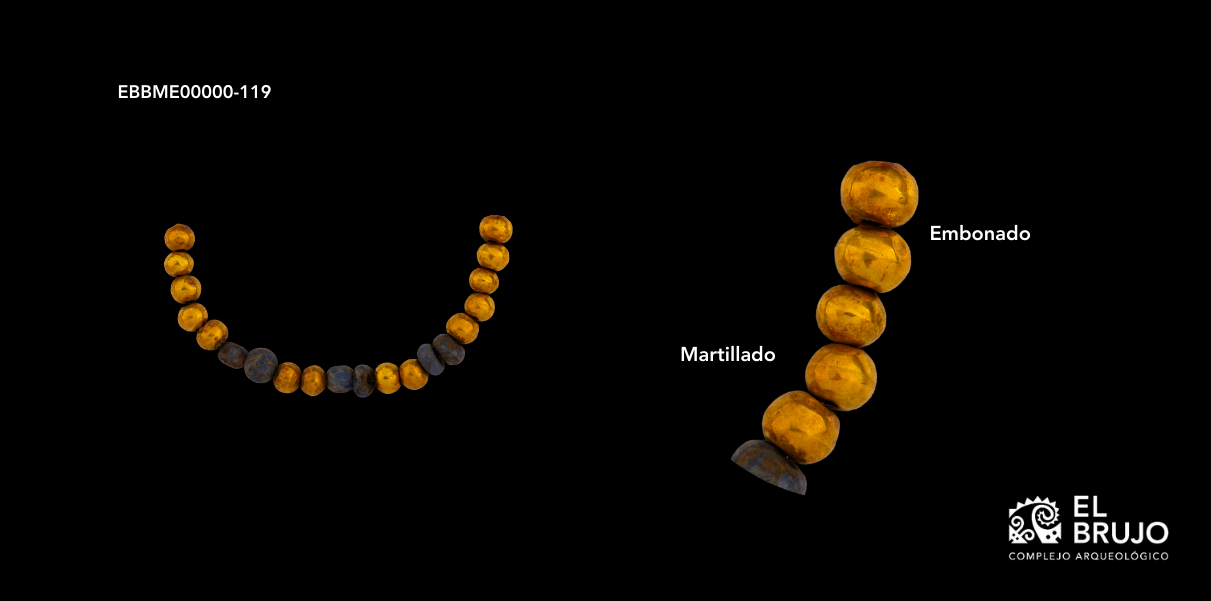
Figure 5. Manufacturing techniques: embossing and hammering.
· Lamination: it is the transformation of an ingot into a metal sheet through the process of hammering and reheating.
· Trimming: consists in removing excess metal to define the desired figure. It differs from openwork because it is carried out in the contour of the silhouette.
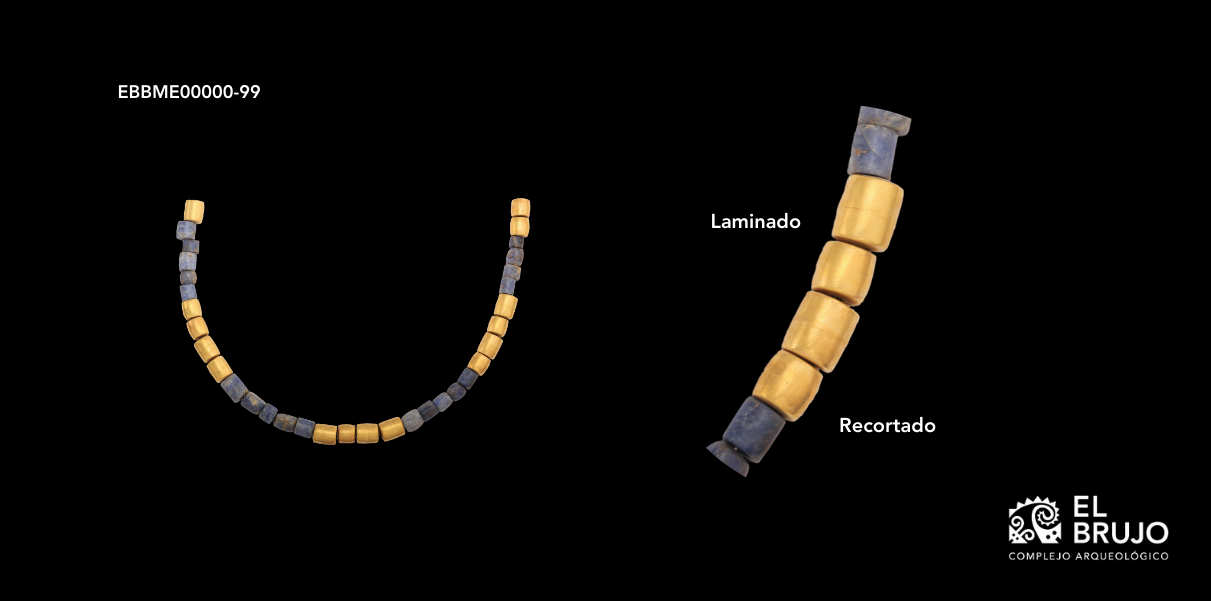
Figure 6. Manufacturing techniques: laminating and trimming
Furthermore, different decoration and finishing techniques were also identified in the beads of the necklaces, the most representative being the following:
· Filigree: it is a goldsmithing technique that consists in crafting pieces using extremely fine metal threads. These threads are intertwined and welded together to form intricate and delicate designs.
· Deep drawing: it is a technique that consists in giving volume, by hammering, to pre-established figures on a sheet. It is used recurrently for crafting spherical beads for the necklace.
· Openwork: it is a decorative procedure that consists in removing part of the metal inside a sheet.
· Embedding: it consists in adding pieces of different materials to a metal surface to create designs and patterns.
· Polishing: considered as a finishing technique, it consists in giving shine and smoothing the surface of the piece as a final treatment.
· Embossing: it is a decorative technique whose purpose is to give volume to previously outlined designs, employing tools known as embossers.
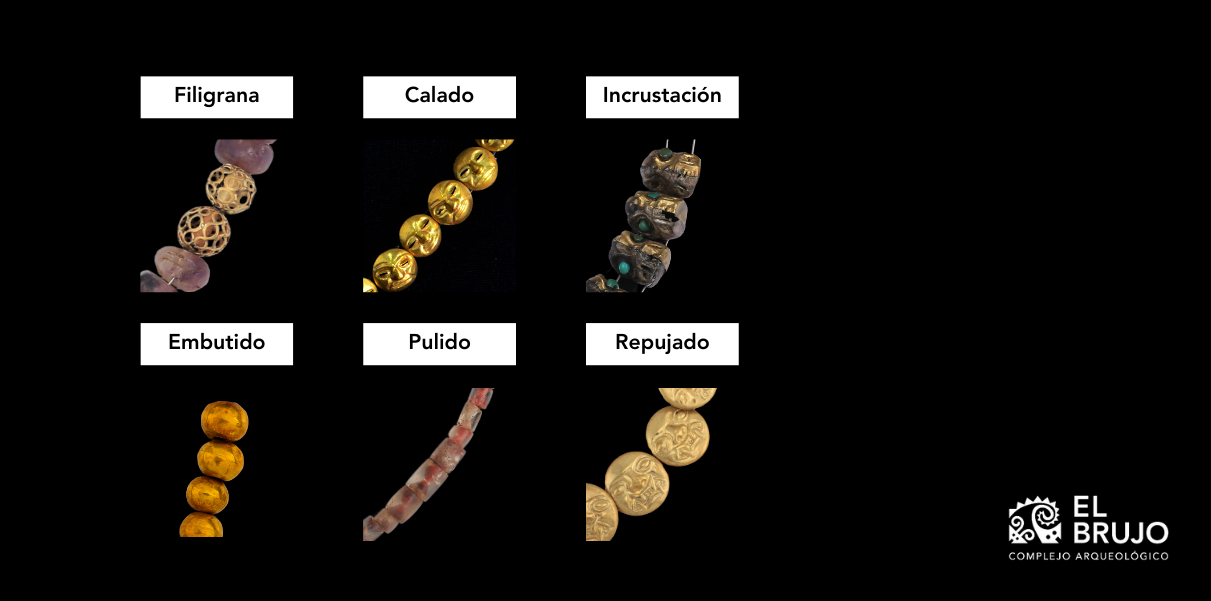
Figure 7. Decoration and finishing techniques for necklaces.
How recurrent are necklaces in funerary contexts?
Considered as offerings and personal objects, necklaces are recurring objects crafted with different raw materials that accompany the burials of men, women and children. Some pre-Hispanic cemeteries with the burials of individuals who apparently did not belong to the elite, such as the Lambayeque funerary contexts in Huaca Cao Viejo (Franco et al., 2007) in the Chicama valley, the burials on the Uhle platform in Huaca del Sol and Huaca de la Luna (Chauchat, 2021) and the colonial burials in the church of Huanchaco (Rodríguez, 2018) in the Moche valley, record necklaces and beads made of mollusk shells as part of the funerary trousseau of each individual. Whereas in elite tombs such as the Lord of Sipán in Huaca Rajada in Lambayeque (Alva and Donnan, 1993), the Lord of Úcupe in Huaca El Pueblo in the Zaña Valley (Bourget, 2014) or the Priestess of San José de Moro (Castillo, 2007) in the Jequetepeque Valley, the necklaces and beads have a more complex crafting, ranging from gold and silver, semi-precious stones, shells of mollusks such as spondylus, among others.
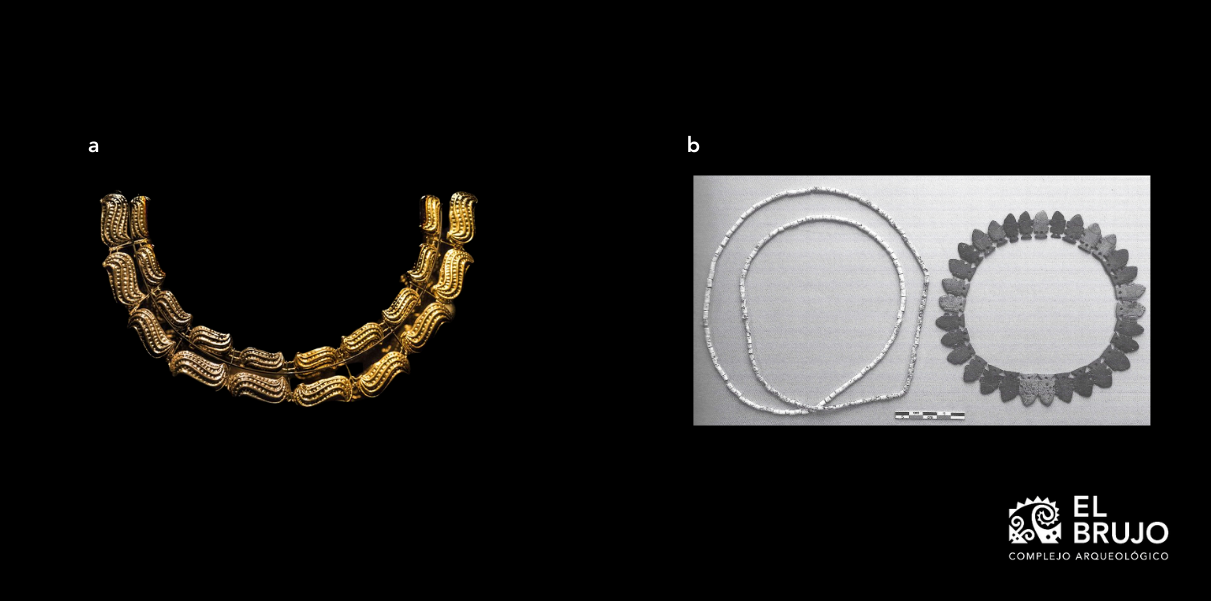
Figure 8. (a) Peanut necklace of the Lord of Sipán (Alva and Donnan, 1993: 94), crafted with gold and silver beads; (b) necklaces of infants from tomb 30, crafted with white shell beads and stones in the shape of fish (Chauchat, 2021: 413).
Recapping
The necklaces of the Lady of Cao were much more than simple ornaments. These objects fulfilled a symbolic function: they reflected the social position, access to different resources, the skill of the artisan and the contact among different societies in a period of high social hierarchy and exchange in the times of the Mochica.
Endnote
i We used the descriptions of the Castillo and Fernández Glossary (2017) to characterize each manufacturing technique in metal pieces.
ii Ditto
References
Alva, W. & Donnan, C. (1993). Royal Tombs of Sipan. University of California Press.
Álvarez, E., & Jöris, O. (2008). Personal Ornaments in the Early Upper Paleolithic of Western Eurasia: An Evaluation of the Record. Eurasian Prehistory, 5(2), 31-44.
Bazán, A. (Ed.). (2021). The funerary context of the Lady of Cao. Find and research of elite Mochica burials in Huaca Cao Viejo, El Brujo Archaeological Complex. The Wiese Foundation.
Bourget, S. (2014). Preface of the book "Divinity and Power in Ancient Peru.
Castillo Butters, L. J. (2007). The Ladies of San José de Moro: Funeral rituals of elite women on the northern coast of Peru. Summa Humanitatis, 1(1).
Castillo Narrea, L. E., Fernández Mascco, D., Ministry of Culture & National Museum of Archaeology, Anthropology and History of Peru (Eds.). (2017). The Treasures of the Museum:
Collection of metals. Ministry of Culture: National Museum of Archaeology, Anthropology and History of Peru.
Cesareo, R., Franco, R., Fernández, A., Bustamante, Á., Fabián, J., del Pilar, S., Azeredo, S., Lopes, R., Ingo, G., Riccuci, C., Di Carlo, G., & Gigante, G. (2021). Analytical studies on the gold and silver jewels of the Lady of Cao. In A. Bazán (Ed.), The funerary context of the Lady of Cao. Find and research of elite Mochica burials in Huaca Cao Viejo, El Brujo Archaeological Complex (pp. 234-271). The Wiese Foundation.
Chauchat, C. (2021). The Uhle platform in Moche. Excavations: 1999-2009.
Fernández, A. (2021). Opening of funeral bundles. In A. Bazán (Ed.), The funerary context of the Lady of Cao. Find and research of elite Mochica burials in Huaca Cao Viejo, El Brujo Archaeological Complex (pp. 116-187). The Wiese Foundation.
Franco, R. (2021). Symbols of power in the emblems and metal ornaments of the Lady of Cao. In A. Bazán (Ed.), The funerary context of the Lady of Cao. Find and research of elite Mochica burials in Huaca Cao Viejo, El Brujo Archaeological Complex (pp. 334-359). The Wiese Foundation.
Franco, R., Gálvez, C., & Vásquez, S. (2007). El Brujo: Post-Mochica Funerary Practices. Augusto N. Wiese Foundation.
Jiménez, M. (2012). Personal accessories and other resources in oral scientific exhibits. MEDISAN, 16(12), 1954-1977.
Kaulicke, P. (2016). MEMORY AND DEATH IN ANCIENT PERU | HUMANITIES | IBERO LIBRERIAS.
Nannini, V. (2016). Fashion, Communication and Power: What do we wear, why and what do we mean by that? [Bachelor's thesis, Universidad Nacional de Rosario].
Rodríguez Ventura, Y. L. (2018). Continuity and change in the use of beads between the late and early colonial horizon in the church of Huanchaco, Moche valley, northern coast of Peru. [Bachelor's thesis, Universidad Nacional de Trujillo].
Sehasseh, E. M., Fernandez, P., Kuhn, S., Stiner, M., Mentzer, S., Colarossi, D., Clark, A., Lanoe, F., Pailes, M., Hoffmann, D., Benson, A., Rhodes, E., Benmansour, M., Laissaoui, A., Ziani, I., Vidal Matutano, P., Morales, J., Djellal, Y., Longet, B., & Bouzouggar, A. (2021). Early Middle Stone Age personal ornaments from Bizmoune Cave, Essaouira, Morocco. Science advances, 7(39), 1-10.
i We used the descriptions of the Castillo and Fernández Glossary (2017) to characterize each manufacturing technique in metal pieces.
ii Ditto
Researchers , outstanding news


